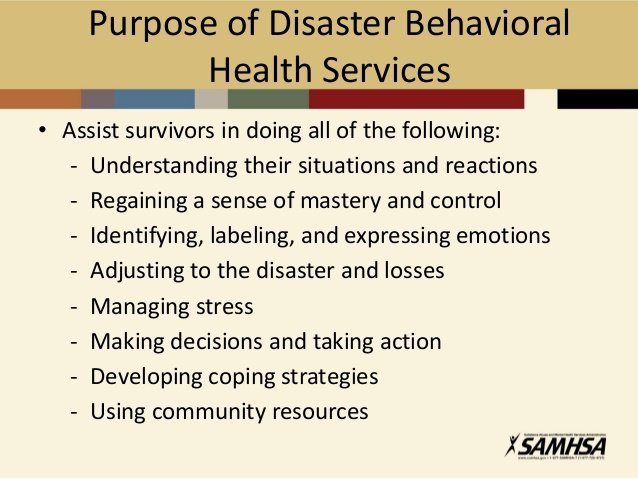
Based on TIP 34: Disaster Planning Handbook for Behavioral Health Treatment Programs
Disaster planning ensures current clients have access top counselors and needed medications, former clients have access to care to prevent relapse, and people who have never been clients have access to prevention resources to help them deal with the acute stressor. Disaster planning means not only planning for “acts of God,” but also planning for events such as a power surge that could wipe out your entire EMR, or a water main burst that floods the entire building and shuts the building down for several weeks. Disaster planning ensures fiscal solvency for the agency and continuity of care for the clients.
SAMHSA Disaster Technical Assistance Center (DTAC) provides various resources and useful information for those in the disaster behavioral health field.
- Acute Interventions
- American Indian and Alaska Native Tribal-Specific Resources
- Animals and Disasters
- Chemical and Biological Events
- Children and Youth
- Disaster Responders
Note: This item replaces the “Public Safety Workers DBHIS” - Disaster Response Template Toolkit
- Disaster-Specific Resources
- Faith-Based Communities and Spiritual Leaders
- Immediate Disaster Response
- Languages Other Than English
- Military Personnel and Their Families
- Older Adults
- People With Disabilities and Other Functional and Access Needs
- Public Health Resources
- Resilience and Stress Management
- Rural Populations
- Substance Use Disorders and Disasters
- Suicide & Disasters
- Women & Disasters
